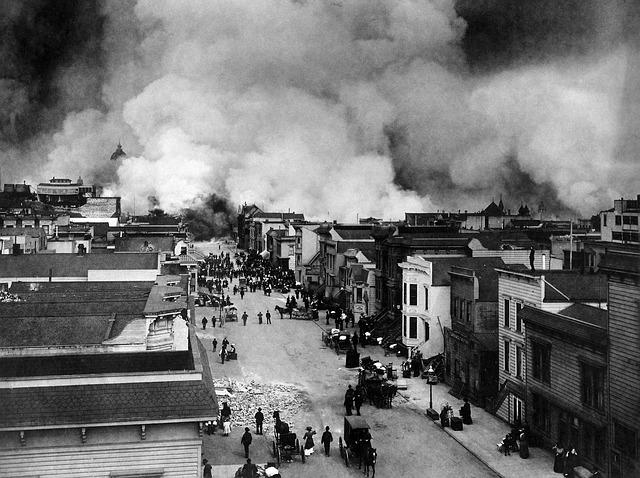Bay Area Shaken Awake by Early Morning 4.3 Magnitude Earthquake
In the predawn hours of Wednesday, a 4.3-magnitude earthquake jolted San Francisco and neighboring communities, abruptly waking many residents across the Bay Area. The seismic event, lasting approximately 15 seconds and occurring just before 5 a.m., originated near the Marina District—a region closely linked to several active fault lines. The United States Geological Survey (USGS) confirmed the epicenter’s proximity to this vulnerable zone, triggering widespread alerts and precautionary responses throughout the city.
Initial observations from emergency responders and local officials include:
- No critical injuries have been documented, though a handful of people sought medical care for minor issues.
- Older buildings, particularly those with unreinforced masonry, exhibited superficial cracks, prompting some voluntary evacuations.
- Temporary disruptions in traffic flow and utility services were reported, especially in areas closest to the quake’s origin.
| Location | Distance from Epicenter | Observed Effects |
|---|---|---|
| Marina District | 0 miles | Cracks in structures, startled residents |
| Downtown San Francisco | 3 miles | Power fluctuations, minor traffic congestion |
| Oakland | 8 miles | Tremors felt, no reported damage |
Damage Evaluation and Community Response Post-Quake
In the aftermath of the early morning shaking, assessments reveal that the Bay Area largely escaped severe damage. Modern buildings, constructed under rigorous seismic standards, remained structurally sound. Nonetheless, some older districts reported minor cosmetic damage such as hairline cracks in plaster and brick facades. Inspection teams have been dispatched to evaluate these areas for safety. Utility interruptions were brief, and public transit systems resumed normal operations quickly after precautionary halts.
Emergency officials summarized the situation as follows:
- Damage: Mostly superficial, including shattered windows and displaced household items.
- Injuries: No serious harm; a few minor cases treated on-site.
- Public sentiment: Elevated concern among residents, balanced by appreciation for timely official updates.
- Infrastructure: No significant road closures or water main breaks reported to date.
| Region | Extent of Damage | Current Status |
|---|---|---|
| Downtown San Francisco | Minor | Completed Inspections |
| Oakland | Minimal | Ongoing Monitoring |
| Marin County | Negligible | Routine Surveillance |
Understanding Bay Area Seismic Threats: Insights from Specialists
The recent 4.3-magnitude quake has reignited discussions among seismologists regarding the Bay Area’s ongoing earthquake risks. Although moderate in scale, this event underscores the persistent threat posed by the region’s intricate network of fault lines. The San Andreas Fault remains the most infamous, but secondary faults such as the Hayward and Calaveras faults also contribute significantly to seismic hazards. Experts stress the importance of continuous preparedness and infrastructure upgrades to mitigate future impacts.
Factors shaping earthquake risk in the Bay Area include:
- Close proximity to several active faults with diverse slip rates and histories
- High population density amplifying potential casualties and economic losses
- Local soil types that can intensify ground shaking through liquefaction or amplification
- Variability in building age and adherence to seismic safety codes
| Fault | Length (km) | Slip Rate (mm/year) | Last Major Rupture |
|---|---|---|---|
| San Andreas | ~1300 | 20–35 | 1906 |
| Hayward | ~118 | 9–12 | 1868 |
| Calaveras | ~120 | 8–12 | 1984 |
Earthquake Preparedness Strategies for Bay Area Residents
In light of the recent seismic activity, it is crucial for Bay Area inhabitants to revisit and enhance their earthquake readiness plans. Key safety actions include anchoring heavy furniture and appliances to walls, assembling emergency kits stocked with essentials like water, non-perishable food, and medical supplies, and identifying secure locations within homes such as beneath sturdy tables or against interior door frames. Familiarity with how to quickly turn off utilities—gas, water, and electricity—can prevent secondary hazards following a quake. Regular practice of the “Drop, Cover, and Hold On” technique is vital to reduce injury during shaking.
Recommended preparedness measures:
- Create and rehearse a family communication plan to reconnect if separated.
- Keep flashlights and extra batteries readily accessible.
- Store important documents in fireproof and waterproof containers.
- Maintain a full gas tank in vehicles to ensure mobility during emergencies.
- Subscribe to local emergency alert systems and participate in community preparedness initiatives.
| Action | When to Perform | Purpose |
|---|---|---|
| Drop, Cover, and Hold On | During earthquake shaking | Protect against falling debris and injuries |
| Secure heavy objects | Before an earthquake | Reduce risk of damage and injury |
| Emergency kit maintenance | Every six months | Ensure supplies are current and functional |
Final Thoughts on Bay Area Earthquake Readiness
As the Bay Area continues to evaluate the effects of the 4.3-magnitude earthquake that shook San Francisco in the early morning hours, officials remain vigilant for aftershocks and further developments. Although no significant injuries or major structural failures have been reported, the event serves as a potent reminder of the region’s ongoing seismic risks. Residents are encouraged to stay alert, maintain preparedness, and follow updates from emergency management agencies. Continued vigilance and proactive measures are essential to safeguarding lives and property in this earthquake-prone region.




